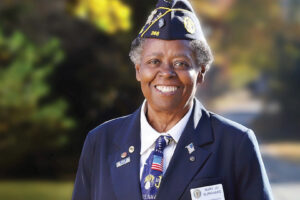Catherine Zalewski knew right away that she was having a stroke. She just wasn’t able to tell anyone around her.
Catherine, who was Miss New Jersey in 2011, was working at her gym as a personal trainer on the morning of July 30 when she suddenly began feeling “very strange,” she recalls. She lost coordination on the right side of her body. She couldn’t speak.
It was all too familiar for Catherine, a 33-year-old mother of two from Marlboro. She had suffered a stroke in 2010, and she had no doubts it was happening again. “I know the symptoms of a stroke, and all I could think was, ‘Oh, my god, this isn’t happening again,’” she says. “I knew what was going on, but I couldn’t tell anybody. All I could do was cry. I felt helpless.”
Fortunately, her co-workers knew her health history, recognized her stroke symptoms, and called 911.
A Stroke Alert
Catherine’s arrival at CentraState’s Emergency Department with stroke-like symptoms triggered a “stroke alert” in the hospital. The alert activates the hospital’s specially trained stroke team. It also ensures a patient has immediate access to CT imaging scanners, pharmacy services and any other care needed to quickly diagnose and treat a stroke, says Ellen Ciacciarelli, MS, RN, APN-C, CCRN, nurse practitioner and clinical leader of neurology.
“Some people envision the typical stroke victim as an older person, but that’s not the case most of the time,” Ciacciarelli says. “In Catherine’s case, we were looking at a very young, vibrant woman. That’s why we approach anyone at any age with stroke-like symptoms as a potential stroke victim.”
Every year about 795,000 people in the U.S. experience a new or recurrent stroke—about one every 40 seconds, according to the American Heart Association.
CentraState is among the New Jersey hospitals designated by the state as a primary stroke center. Primary stroke centers have to meet a list of strict requirements, including having personnel trained in the diagnosis and treatment of acute stroke available at all times. CentraState cares for nearly 400 patients with a stroke diagnosis each year, Ciacciarelli says.
‘Time is Brain’
Tests determined Catherine had suffered an ischemic stroke, which is a clot in a vessel supplying blood to the brain. The longer the clot remains, the more likely a patient can suffer permanent brain injury. The most effective treatment for ischemic stroke is a clot-busting drug known as tissue plasminogen activator, or tPA. tPA can greatly improve a patient’s chances of a recovery after a stroke, says James Ware, MD, a board-certified neurologist and medical director of the stroke program at CentraState. The drug, however, can only be given within three hours of the onset of stroke symptoms—or up to four-and-a-half hours for patients who meet certain criteria.
“The key for stroke treatment is time,” Dr. Ware says. “We’re prepared to provide rapid stroke care but a patient has to make it to the hospital in time. Time is brain—the longer you wait, the more damage that occurs in the brain.”
Because of the quick response of her co-workers, Catherine was able to receive tPA. Nationwide, however, only three to five percent of those who suffer a stroke reach the hospital in time, according to the National Stroke Association.
A True Team Effort
In addition to Ciacciarelli and Dr. Ware, Catherine’s treatment team at CentraState included Minakshi Nijhawan, MD, a board-certified internal medicine physician; James Engelman, DO, a specialist board-certified in physical medicine and rehabilitation; Bhavesh Balar, MD, a board-certified hematologist; and Robert Kayser, MD a board-certified cardiologist.
Dr. Kayser was consulted because Catherine’s prior stroke in 2010 was linked to a condition known as patent foramen ovale (PFO)—a hole in the heart that is often present at birth. The hole was surgically repaired that same year.
“After a stroke, we try to figure out why it happened to try to prevent it from happening again,” Dr. Kayser says. “Some of the most common cardiac causes of stroke are PFO and an abnormal heart rhythm called atrial fibrillation. Unfortunately, we could not pinpoint a cause of Catherine’s stroke because her PFO had been repaired.”
Catherine spent 24 hours in CentraState’s Intensive Care Unit and went home on Aug. 4 after five days in the hospital.
A Quick Recovery
Catherine says she is in a unique—albeit unlucky—position to understand the importance of rapid stroke treatment. Her first stroke in 2010 happened while she was asleep, and she wasn’t able to get to the hospital in time for tPA therapy.
“The clot-busting drug was my saving grace,” she says. “The difference between my recovery this time and last time was absolutely night and day.”
Catherine was up and moving within a day of her stroke. Her speech returned to normal fairly quickly. With the help of occupational therapy at CentraState, she regained some of the fine motor skills lost on her right side—things like being able to grip and open a bottle.
Because doctors are not sure of the cause of her stroke, Catherine will continue taking blood-thinning medication into the future.
In November, she returned to her position as a personal trainer, and she’s back to enjoying time with her children: Ava, 5, and little Jaxon, who was just two months old when she suffered her stroke.
“I feel very blessed to be where I am today,” she says.
Get more information about CentraState’s Stroke Center here or call 866-CENTRA7 (866-236-8727).





